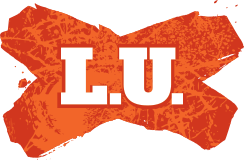*Willow for the Bluebags*
The Naked Truth about Footy History
According to the Union spin doctors, Rugby Football was created by some American called William Webb Ellis in 1823. At best, it is hearsay. Perhaps it is true that a young student while attending an English Public School in the village of Rugby, did indeed pick up a soccer ball and run with it towards the opponent’s goal line. But there is no evidence that this ‘defining’ moment in sport history ever actually took place.
The main problem with this story is that it only surfaced in 1895 when the Northern Football Union formed a new breakaway competition – some 70 years after the alleged event. It came about while both England and France were claiming ownership of the game’s origins and while the new ‘Rugby League’ was severing ties with the establishment.
Nevertheless, Rugby Union insists on calling its ‘World’ Competition, the
Webb Ellis Cup and have now elevated it to being the holy grail of Rugby – a clever ploy and one which sees commentators repeating the claim that Rugby Football is an English invention - a claim which even Rugby historians cannot verify.
So what is the true origin of Footy?
According to the Wales Tourist Board, the game of Rugby Football, and for that matter, Rugby League, can thank the naked romps of Welsh villagers for the game we have today.
In defiance of the English viewpoint, Welsh postcards are circulating the proclamation: ‘Rugby is Born - Wales 1603’.
The Welsh claim that Rugby Football is over 400 years old and that it was played over the countryside between villagers who, despite the weather, competed without a skerrick of clothing.
One can but imagine how modern footballers would hold up playing in the nuddy on a chilly Canberra Stadium or at Melbourne’s Olympic Park. The footballers in 1603 were never dealt the comfort of an Australian Autumn night. They must have been tough as teak as they were delivered to the turf on an icy Welsh pitch with nothing to protect them other than their wits and the skin beneath their bones.
The Wales Tourist Board refers to a competition called ‘Cnapan’ which took place between two villages in Pembrokeshire exactly 400 years ago. In ancient Welsh language, ‘Cnapan’ means ‘ball’ or ‘bowl’. The Cnapan was made of wood and then boiled in fat to make it slippery. Up to 1500 players competed and they wore no boots, no shorts and no jerseys. They competed for possession, they tackled each other… and they ran with the ball.
The description of Cnapan comes from Orwerth C Peate who speaks of the Welsh traditions in his book, ‘Traditional and Folklife’. Despite the obvious historical differences, Peate states: “Cnapan may well have predisposed the Welsh towards their love of and skill of Rugby Football”.
There was even a match report from the time. Chronicler, George Owen (1552-1613) described it as: “Each side used every means possible to stop the other carrying the ball into their own village.”
“About one or two of the clock afternoon begins the play… after a cry made both parties draw into some plain, all first stripped bare saving a light pair of breeches, bare-headed, bare-bodied, bare legs and feet.
“There is a round ball (called cnapan) prepared of reasonable quantity so as a man may hold it in his hand and no more….
“The match begins when one man hurls the cnapan high in the air. Whoever catches it, hurls it towards the country he plays for, for goal or appointed place there is none – neither needs, any for the play is not given over until the cnapan be so far carried that there is no hope to return it back that night.”
Apparently and regrettably, the score of this historic match was not recorded.
The Welsh are indeed a mighty people who have survived centuries of English domination. What a credit is to them and their offspring that they can lay claim to yet another culture that was once accepted as being merely ‘British’.
*674 words*
--------------------------------
Ref: 'Weekend Bulletin' (James Shrimpton)
Ref: 'A Brief History of Rugby League' (Steven Williams)



